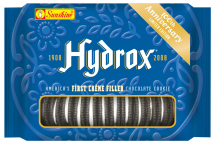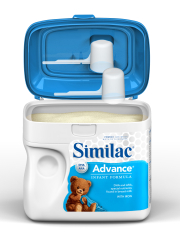Report declares chemical safe
Hong Kong legislation requires revised nutrition labeling
Soup label becomes more informative
Hydrox makes a comeback
Similac in rectangular container

by Pan Demetrakakes
Executive Editor
Rising food prices would seem, logically, to motivate consumers to seek out less expensive foods. But some recent studies have shown a significant number of consumers heading in the opposite direction.
A report by Holland’s Rabobank, which specializes in financial services to the food and agriculture industry, referred to a “barbell effect” among food shoppers: The majority of them are going for either low prices, at one extreme, or high value at the other. The high-value end of the “barbell” could consist of several attributes, including quality, healthiness and convenience.
Buying costlier, higher-quality foods may seem counterintuitive when food prices are rising, but it makes sense, at least over the short term. The Rabobank report notes that many consumers are increasing their at-home food budget by cutting down on meals away from home. This is one reason why most major food retailers showed same-store sales growth over the first quarter of 2008, while restaurant sales are stagnant or declining-even though the inflation rate for food away from home (4.1%) is lower than for food at home (5.5%).
In a survey for Whole Foods Market, 79% of respondents said they did not want to compromise the quality of foods they buy regardless of rising prices, and 70% said they are buying the same amount of natural/organic foods they always have. They survey, conducted by Harris Interactive, also found 67% would prefer natural/organic foods if their prices were comparable to those of regular products.
The Rabobank report also notes that many food processors have so far been protected from the full impact of ingredient price increases by long-term contracts with suppliers. As these contracts expire and processors are forced to pass along increases, consumer buying patterns may change.
The food companies that succeed in making price increases “stick”-that is, without driving consumers to lower-cost alternatives like private label-will be those with unique, hard-to-replicate products. Analysts say this is why companies like Kraft Foods and General Mills have enjoyed good recent financial performances, despite the general inflation in the food sector.
TOP DEVELOPMENTS
Report declares chemical safeThe U.S Food and Drug Administration has declared that bisphenol A (BPA), a chemical commonly found in baby bottles and metal can linings, is safe, despite hundreds of government and independent academic studies that link it with breast cancer, testicular cancer, diabetes and hyperactivity in laboratory animals. However, the National Toxicology Program had released a report the previous day, stating that current human exposure to BPA is of “some concern for its effect on development of the prostate gland and brain and fetuses, infants and children,” noting that developmental changes are occurring in some animal studies with similar exposure levels.
Hong Kong legislation requires revised nutrition labeling
New labeling legislation introduced in Hong Kong in May will affect hundreds of millions of dollars worth of packaged food and beverages exported from the U.S., as nutrition claims need to be rewritten, according to the U.S. Department of Agriculture’s Foreign Agricultural Services. The new regulation requires labels for all packaged food sold in Hong Kong to specify calories and seven nutrients: protein, carbohydrates, fat, saturated fat, trans fat, sodium and sugars. While U.S. nutrition claims require listing of calories and 15 nutrients, differences in nutrient definitions, rounding practices and recommendations for daily consumption conflict with Hong Kong’s nutrition claims, which are stricter than Codex recommendations.
Soup label becomes more informative
Campbell Soup introduced its revamped line of Select Harvest soups with labels designed to better inform the consumer what is and isn’t in the soup. While the soups are being made from ingredients people can recognize, asterisks and something like footnotes will be added to the labels to make the growing number of label-reading grocery shoppers more comfortable.

NEW PACKAGES
Hydrox makes a comebackHydrox cookies, an Oreo competitor that disappeared from store shelves years ago, is being resurrected briefly for its 100th anniversary. Kellogg, which bought the chocolate sandwich cookie in 2001, brought it back in a limited edition starting in late August. The film overwrap features a window to reveal the product, plus graphic elements that appeal to nostalgia: a callout with “100th Anniversary Limited Edition,” the years 1908-2008 and the logo of Sunshine Bakers, the brand’s original developers.

Packaging for Similac powdered baby formula from Abbott Nutrition has been redesigned for maximal convenience. Features of the new plastic rigid container include indented sides for a one-handed grip, a hinged lid whose underside holds a scoop, rounded corners for easier scooping, and a peel-back label with additional information and a Spanish translation. The new package, available in 23.2- and 34-ounce sizes, takes up 33% less shelf space than cans of comparable size.
